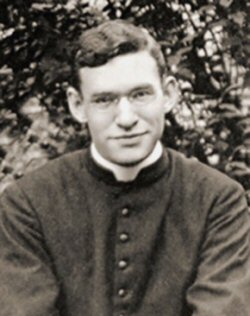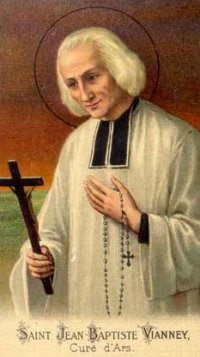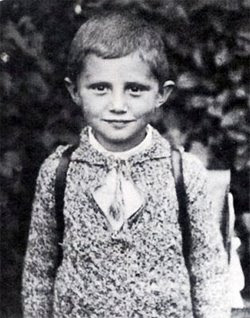From Catholic Exchange.com
by Amy Blythe
Christ came to redeem mankind from slavery to the passions by His life of sacrifice. Everything about Him went against the grain in a most unprecedented, radical manner causing scandal to the Jewish people who were expecting a temporal Messiah. Observe: he loves sinners, and eats with them; adulterers receive mercy; the ill He heals on the Sabbath. Most disturbing of all, He is not married but is a virgin and preaches continence for the sake of the Kingdom of God.
The priesthood of the New Law is not made up of the powerful and intellectual but of men from ordinary walks of life who have renounced everything to live in continence, to follow the Master more closely. There are many in secular circles, and some even within the Church today, who question the validity of this charism in relation to the priesthood, arguing that it no longer suits the modern times in which we live. Others claim that there is no evidence, either scriptural or historical, that supports the apostolic roots of a celibate priesthood. Contrary to all the negativity, in-depth research vindicates priestly celibacy as indeed apostolic.
The proponents of abolishing the celibate priesthood use Scripture, claiming that the Apostles were married based on the passage relating the cure of Saint Peter’s mother-in-law of a fever by Jesus (Matt 8:14-15). The reasoning is as follows: the Apostle has a mother-in-law, therefore he is married. Yes, Saint Peter obviously married at one time, but does that mean that he is married at the time of his apostolic call by Jesus? There are women who pass away before their mothers and before their husbands. In some such cases the mother-in-law moves in with her son-in-law. This possibility cannot be ruled out. Even if the Apostle is married at the time of his calling, the Lord states unequivocally what is required to follow Him: to leave everything, including family and wives (Luke 14:26-27). What of the invitation of Christ to a continent life (Matt19:10-12). Further on in the same text renunciation of possessions is declared a necessity to be a disciple. It is in response to the words of the Prince of the Apostles that we receive confirmation again from Jesus’ own lips as to what they have sacrificed: lands, home, mother brother, sister, wives and children inclusive (Matt19:16-30). It is clear that the desire of the Lord is to have men who are divested of all worldly ties and responsibilities in order to devote themselves unreservedly to His service.
A subsequent argument by the opponents of celibacy is that it is an invention imposed by the Catholic Church in the fourth century. Opponents present Scripture and early ecclesial history in a manner that can be misleading for the ordinary lay Catholic unacquainted with all the facts. Major research has been undertaken into this controversy by scholars Cardinal Stickler, Father Cochini S.J., Roman Cholij as well as Stefan Heid. What they all assure us of is that continence is the norm for the priesthood both East and West from the beginning of the Church’s history. Among the aforementioned, Stickler provides the most succinct and easy to understand presentation of the subject. He demonstrates that if a man was married prior to ordination, both he and his spouse took a vow of perpetual continence, this applied from the lower clerical ranks up to Bishop. In the West, the Council of Elvira in the fourth century makes direct reference in Canon 33 to this renunciation of the martial rights and notes that this meant no begetting of children. The penalty for violating this vow is removal from the clerical ranks. If a priest violated this solemn promise and begot a child it was considered adultery. As Stickler points out, Saint Jerome — who knew many Bishops, Fathers and monks throughout the East — testifies in his writings that continence is the norm in the Eastern Church and that married men who were ordained would separate from their wives. The same Council Elvira, in Canon 27, as well as Nicea, in Canon 3, gives even further specifications: that a Bishop and priest is only permitted to have a blood sister, mother, aunt, or a daughter who is a consecrated virgin dwelling under the same roof. This excludes a wife.
Probably the favorite of all opponents arguments centers upon a Saint Paphnutius of Egypt called “a Bishop and hermit.” It is asserted that at the Council of Nicea this holy man pleads with the Fathers to not impose continence on priests saying that it is too heavy a burden to place upon them. He proposes to allow the particular Churches to decide on their own practice. Up until recently, this was believed to be a justification for the current married practice among the clergy of the East. Stickler, Cochini, Cholij and Heid all masterfully tackle this long-standing. The veil was lifted from this mystery by study into the Council documents, in which accurate records were kept of every Bishop present. Examination of the oldest texts revealed that among the names of Fathers in attendance, there was no such Bishop by that name. Stickler acknowledges that his name does appear in later copies of the Council’s proceedings but it is a contradiction because he was honored at the time of Nicea as a Confessor, not a Father. It is concluded that his bishopric was of the nature of a legend, a creation of hagiographers’ pious devotion.
The perplexing question then arises: If priestly celibacy dates from the Apostles, why is it that only in the fourth century do we begin to see actual Church law enforcing celibacy? A principle which must be understood is the following: the absence of a formal ecclesial declaration up to a certain period does not imply that the dogma, doctrine or discipline is not universally believed by the Body of Christ. In other words, controversy begets definitive pronouncements by the Church. The Divinity of Jesus Christ, his being fully God, was not formally declared until the fourth century at Nicea but the Church always professed this belief. The denial of this truth by the heresiarch Arius demanded a concrete defense. The same can be applied to Mary’s title as Mother of God. It was not formally declared until the fifth century at the Council of Ephesus, yet she was venerated as such from the very beginnings. Again, it is the refusal of Nestorius to render Mary her rightful veneration that prompted a concrete response. In this case, as Stickler notes, the Church made specific laws regarding celibacy among the clergy because of widespread abuses where the vow of continence was not being faithfully lived out. It is at this point that we begin to see one of the first rifts between East and West.
Eventually, due to these increasing difficulties and abuses, the Latin West began gradually selecting more and more candidates to the priesthood and Bishopric from among the monastics. Over a period of time, especially with the establishment of seminaries by the Council of Trent, the phenomenon of married clergy completely disappeared. As for the Eastern Church we have a very different response conditioned both by geography and politics. While the Latin Church had the great advantage of the central authority of the Pope, the East had problems attaining any kind of conformity in discipline due to myriads of regional Councils all making decisions in dealing with abuses and there was no one to give a definitive judgment. Added to these issues is the close relationship between the Byzantine Empire and the Church. This had benefits in allowing for religious freedom but often it led to the government interfering with the hierarchy’s efforts to properly exercise governing authority. Despite these influences, there is today within the Eastern Churches a large number of celibate priests, but, if the circumstances of history had been more favorable, the clergy of the East would be entirely celibate as well.
Ultimately, continence - celibacy — receives its supreme value from the fact that Jesus chose it for Himself and for His Mother Mary. This should not be brushed away as a mere coincidence nor should this way of life be viewed just as a “discipline.” This is missing the point. Priests share in the eternal priesthood of Christ and are Persona Christi, to be mirrors of His very Person not just in word and act but their very mode of being. The Lord came not to be served but to serve and to pour Himself out as a ransom for souls. By this charism of continence - expressed most completely and perfectly by virginity — the priest is poured out and consumed like Christ, not for a physical family but for the souls of the faithful. Of course, the debate on the celibate priesthood will always exist but for Catholics the best answer will be found by kneeling before Jesus crucified where virginity’s lasting value is silently conveyed in two words: love and sacrifice.
For further information please see:
The Case for Clerical Celibacy by Alfons Maria Cardinal Stickler (Ignatius Press)
Celibacy in the Early Church by Stefan Heid (Ignatius Press)
The Apostolic Origins of Priestly Celibacy by Father Christian Cochini S.J. (Ignatius Press)
If you are actively discerning a vocation to the Priesthood, Diaconate, Consecrated Life, or Marriage and you are looking for information to help in your discernment, BE SURE TO CHECK the section at the bottom of the right sidebar for the "labels" on all posts. By clicking on one of these labels it will take you to a page with all posts containing that subject. You will also find many links for suggested reading near the bottom of the right sidebar. Best wishes and be assured of my daily prayers for your discernment.

Subscribe to:
Post Comments (Atom)























No comments:
Post a Comment